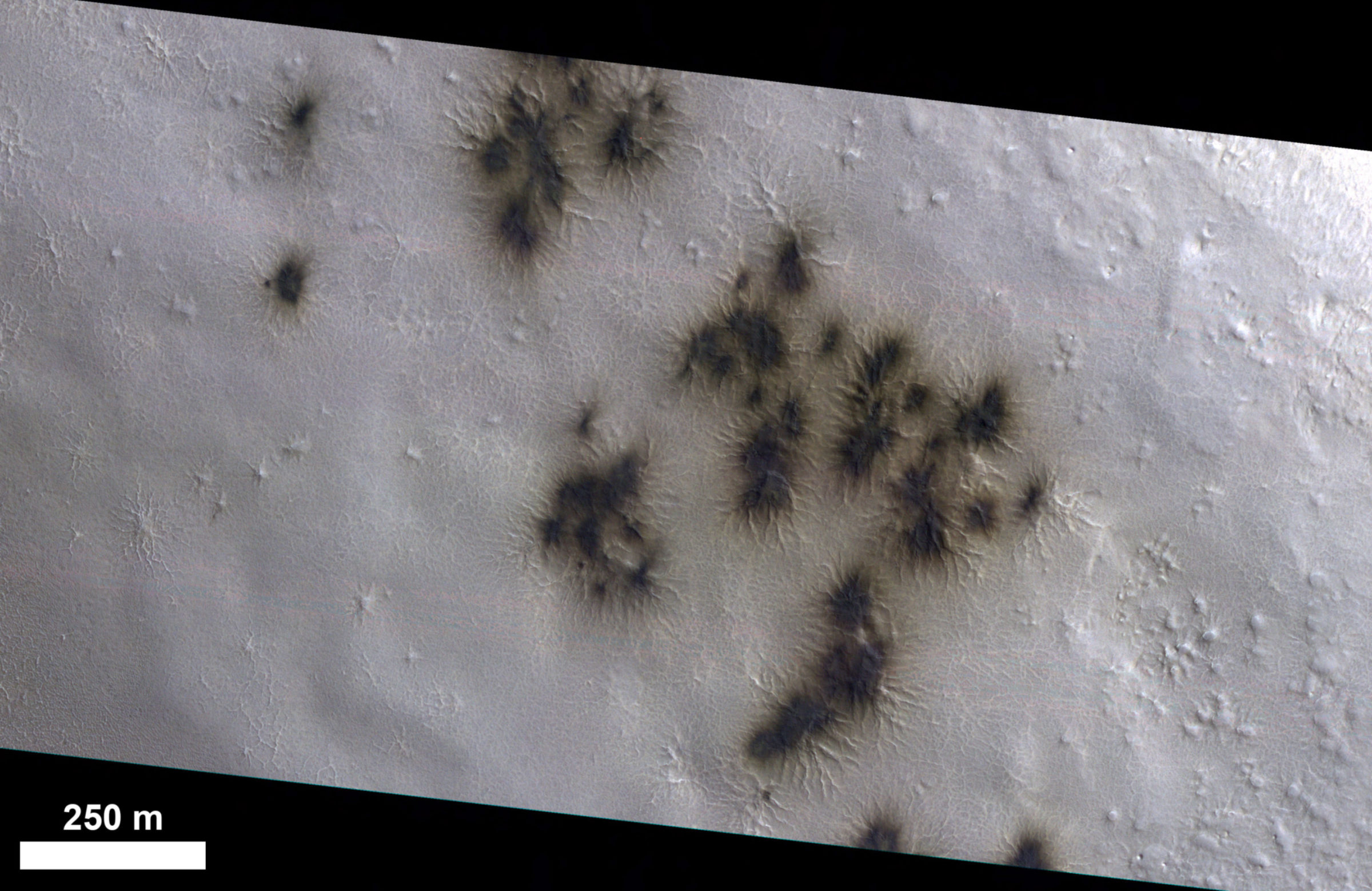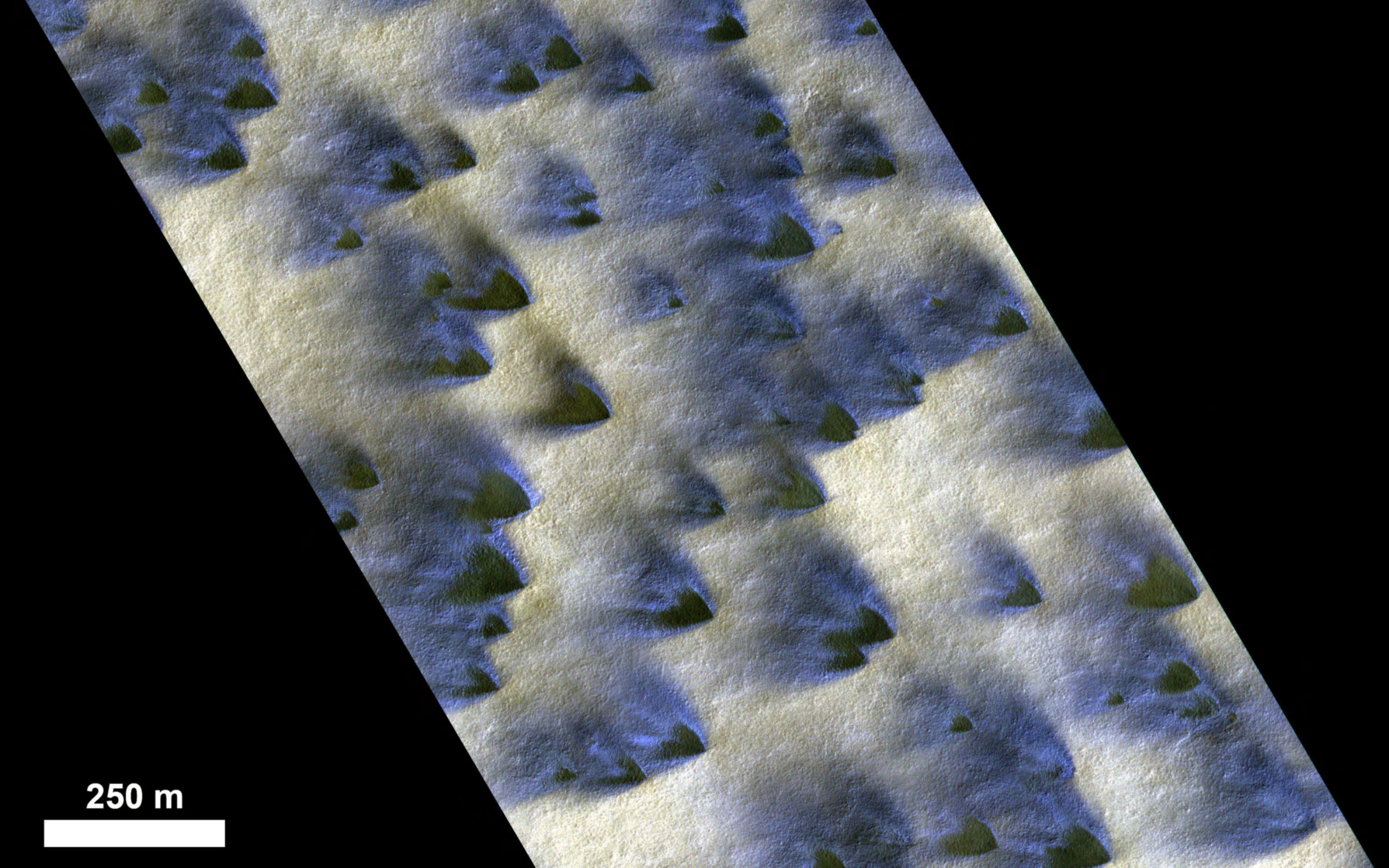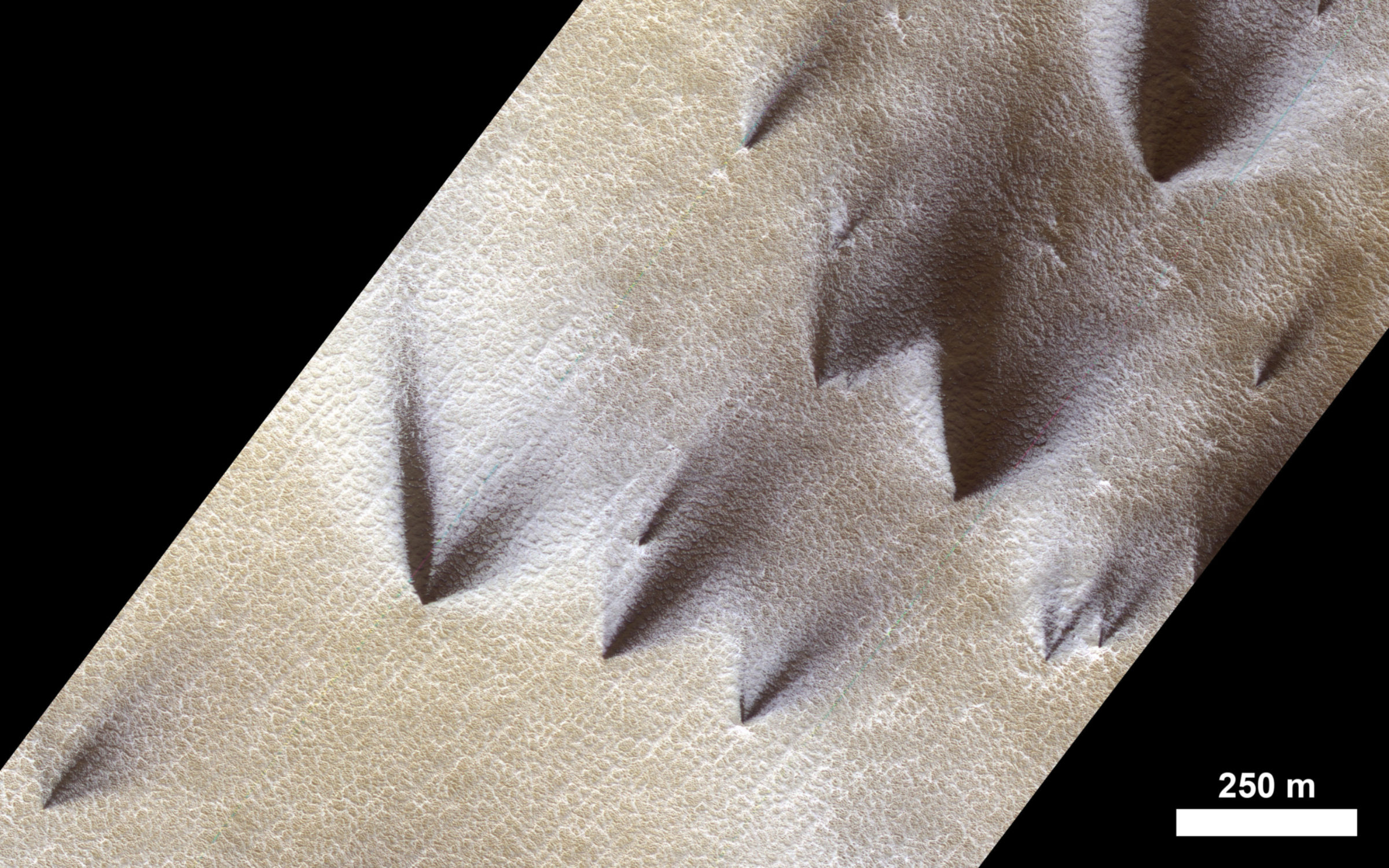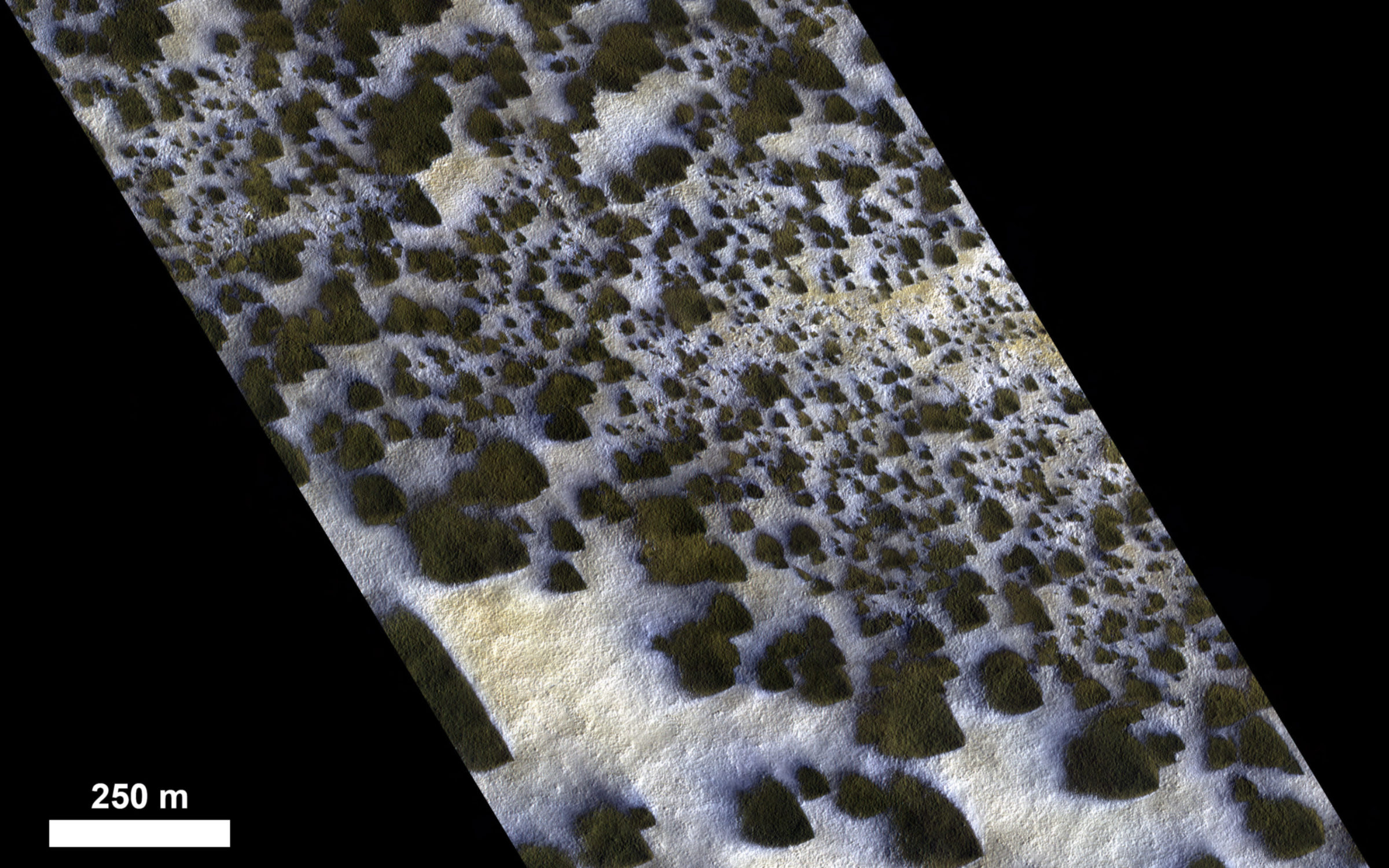Ganna (Anya) Portyankina • Jan 23, 2013
Introducing PlanetFour
Hi everybody!
Many, many people have told me that they think about Mars as a “dead world”. The images from rovers are truly amazing, but the scenery is static, right? Apart from rare dust devil or a cloud, nothing moves. If you share that impression, I would like to invite you to see a different Mars.
The Mars I study is really active; the surface constantly changes. I do research about martian polar areas and how they change with the seasons. Our group uses the HiRISE camera on Mars Reconnaissance orbiter to monitor polar areas, taking a series of photos of the same spots at different seasons to help us understand the details of what is going on. Here is an example of what we see:
We have collected a lot of image data about these seasonal features. There is so much that we can't analyze all of it on our own. We need your help. So, on January 7, BBC-2 launched a new part of the Zooniverse citizen science project. Zooniverse is a place where everybody can take part in ongoing research by helping scientists deal with the data they have collected. We've named the project PlanetFour.
Since the launch, people really rocked it! As of the moment that I wrote this, the project already had more than 54 thousand participants who have already analyzed 2.7 million image frames! Even so, there are plenty of images that nobody has looked at yet, so come help us!
What are you looking at? Those dark and bright fans are footprints of cold jets that erupt from underneath the carbon dioxide ice layer (read how cold jets are created here). Their appearance depends on local wind conditions. When the jets erupt in windless conditions, the dust settles neatly around the source, like this one:

We call those dark areas blotches. When it was windy at the moment of jet eruption, we see fan-shaped deposits:

And when wind changed while eruptions were going on, we see multiple fans starting from the same source:

The bright bluish or whitish fans on the last two images are indications of fresh carbon dioxide frost.
So, fans encode a lot of information: 1) an area’s level of activity and its time dependency; 2) the local wind pattern and its volatility; 3) how much dust they all together are able to lift up; and 4) what are the atmospheric conditions close to the surface.
One thing we can't explain yet is why fan formation varies so much from place to place. The fan-coverage of the surface is not uniform, and changes even inside one HiRISE image. We do not know yet the reasons, but some areas get completely covered, while others hardly show any fans. And then, it all changes with time.
We would like to find out the reason for this inhomogeneity. To do this, we need to count all those fans and try to correlate their distribution with other factors. Do they correlate with surface properties? Or maybe climate conditions? We also want to find reasons why spring sublimation of volatiles is more violent in some areas than in others. And why it starts earlier in some places than in others.
There is no such thing as too much data. But-but-but. There is also not enough time to explore everything as thoroughly as we would like to. Let me show you an example that has always, always frustrated me. I could never ever count all the fans in this image:

And just imagine: we have now collected several years of such data. This is where you can help: you go and mark every fan that HiRISE has ever seen. Okay, you can't do all that, but you personally maybe mark 100 of them. Or 10. But all together, we can do all of them. Our PlanetFour software records all fans' positions, sizes, and directions.
What can we do with that data? First, this will give us a wind map in the area. We can see how it fits to what climate and weather research predicts. I hope we will be able to see how local topography diverts airflow; there is no direct data about this yet. We will know if the wind pattern changes between years. We would need multiple weather stations to do such monitoring, if we did not see these fans. So, fans will help us with understanding martian weather.
We will correlate the number of fans per area and time with different surface properties: surface roughness, its mineral composition, and percentage of water ice in the subsurface. We hope to see which of those makes the areas more active. We will look at the time development of numbers of fans, to show us the patterns of activity. This will help us understand the sublimation processes of the carbon dioxide layer in more detail than we do now.
Then, we will sort out what fan type means. Which fans have frosty fans around them? We will determine when that frost appears, what conditions it favors, and when is it gone. So, we will be fitting these data to our models for carbon dioxide condensation, and seeing if it formed by direct condensation to the surface, or if it actually snowed carbon dioxide. We would like to know if it snows on Mars with “dry snow”.
So, this is what we want to get. Beyond that, we expect people to find things. Something that no one saw before, either because nobody looked, or did not pay attention, or had no imagination to notice. Maybe most of the things that the searchers find are known and already researched, but there is always a possibility to discover something absolutely new. Otherwise why would we explore?
Support our core enterprises
Your support powers our mission to explore worlds, find life, and defend Earth. You make all the difference when you make a gift. Give today!
Donate

 Explore Worlds
Explore Worlds Find Life
Find Life Defend Earth
Defend Earth

